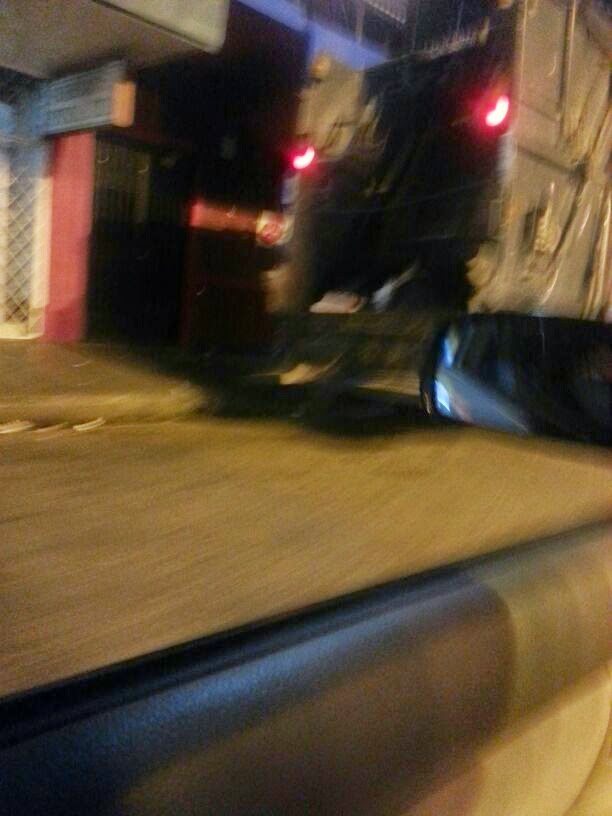Globally an increasing
number of persons are being forced to move to cities in search of better job
opportunities and better living conditions. This process is occurring worldwide
but at faster rates in developing countries such as Latin America and the
Caribbean. This process is known as urbanization and leads to urban economic
growth but neglects the issue of urban development. My blog focused on
urbanization and the effects of pollution. It highlighted various pollution
types that cities face, the causes and the solutions.
The blog found at http://urbantransporthubbs.wordpress.com/
targeted urban transport hubs in Trinidad. Transport hubs are extremely
important across the globe, without transport systems the world wouldn’t be as
is. Transportation links the entire globe and as a result of this the author of
this blog, Ronnen linked the main transport hubs in Trinidad together. He showed
pictures and described the challenges as well as the benefits of the transport
system in Trinidad. He mentioned that the main transport hubs were City Gate
(P.O.S.), San Juan, Curepe, Chaguanas, Arima and San Fernando. The main
location to obtain transport was Port of Spain as one could obtain transport to
all the other cities from this area. At each of the main hubs there were
terminals available in which one could wait on transport, however all of the
terminals were not that appealing. He outlined which hubs were more important and
which urban cities were associated with the more important hubs. Some of the
urban cities never “sleep” and as a result transport was always readily available
at these locations. To relate Ronnen’s blog to mines is quite simple as he
focused on transport as to mines on pollution. Each vehicle that is used for
transport releases emissions into the atmosphere that can be very toxic and due
to the rapid increase of vehicles on the road climate change is also expected
to increase as a result of air pollution by vehicles. A solution to limiting
the amount of vehicles entering the city could be the use of PTSC buses which
have increased in efficiency over the years, however they are not as reliable
as needed to be to support an urban city like P.O.S. Policies would need to implement
and investments made in order for this vision to become a success.
The second blog that I
reviewed was http://urbancommercialism.blogspot.com/
and I found it to be quite interesting and extremely appealing at the same
time. She targeted many ideas under the theory of commercialism and therefore
her blog kept flowing and wasn’t repetitive. Each post looked at something new
and the headings and pictures were well done as they kept grasping my
attention. She made a post on visual pollution which related to my blog as my
topic was on pollution in urban areas. In my blog I didn’t target visual
pollution as it is a form of advertising and doesn’t degrade the environment to
the extent that land, water and air pollution does. Her blog can also relate to
mines in the sense that she explains commercialism is everywhere and
increasing, therefore there would be byproducts and increases in waste as a
result. The more a population grows, the more resources they need which means
the more waste is available, however the problem would be how to dispose of the
increased waste efficiently.
The third blog that I reviewed
was http://urbancongestion.blogspot.com/ which was done by Rachael. Urban congestion
along with urbanization and pollution were areas that were targeted by many of
the other bloggers. These two blogs although they have their differences are
quite similar and target the same problems of urban areas. She outlined that
urban congestion was a major issue that affected the city. When urban
congestion occurs this leads overcrowding causing the city to exceed its carrying
capacity, thus leading to many urban problems such as pollution which can lead to
severe flooding: an issue in which P.O.S. is all too familiar with. Many of her
posts along with many other persons who targeted this topic all mentioned how
this congestion can lead to different forms of pollution. As mentioned before
the urban population is growing at an increased rate for developing countries
such as Trinidad and unless measures are taken to reduce the effects of urban
growth, there will be many repercussions that might be unbearable for
developing cities.
In closing all urban
topics are related as they all lead to each other in some way or another and
can lead to the ‘domino effect’ as outlined by Rachael. As a result of this
each blog can be educational in its sense, but can never be completed unless
all issues on urban cities are connected. Therefore when focusing on one
problem of urban cities we are able to see relationships between different
topics, thus showing the complex and diverse nature of urban cities.














